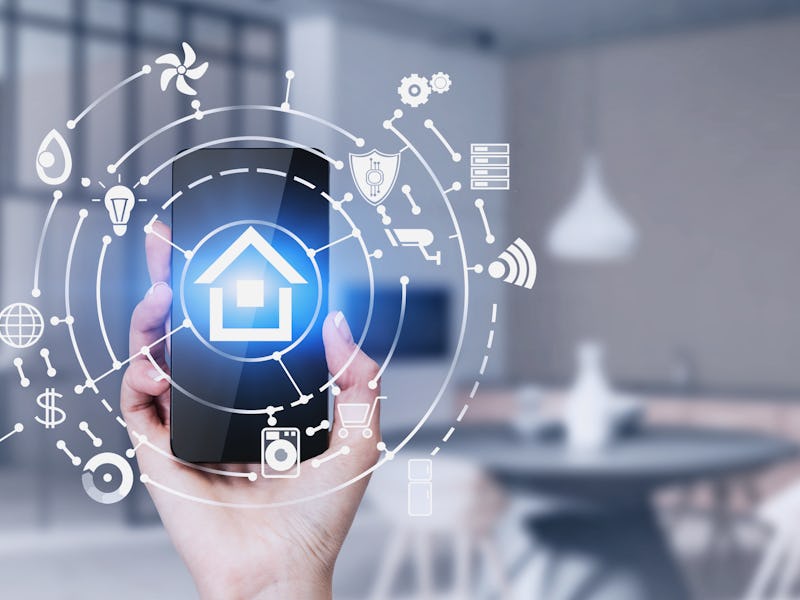Apple, Google and Amazon’s plan could finally end the smart home nightmare
Connected Home over IP promises to create a single, coherent standard for connectivity. Will it work?

One last throw of the dice for smart homes?
On Wednesday, tech firms put their weight behind a new connectivity standard to make all these smart bulbs, thermostats and fridges work together in a slightly more coherent way. Apple, Amazon and Google will work with the Zigbee Alliance to develop the standard, also working directly with alliance board members like Ikea, Signify (better known as Philips Lighting), Samsung SmartThings, Somfy and more.
The end result is an independent working group called Connected Home over IP. This will create an open, royalty-free smart home standard that works over the Internet Protocol used by everyday computing devices. Its aim is to be secure, straightforward, reliable, and compatible with the big-name voice assistants like Amazon Alexa, Apple Siri, and Google Assistant.
Google’s press release explained the problem as such:
While smart home devices are abundant, the lack of an industry-wide connectivity standard leaves people confused and frustrated when trying to understand what devices work with each smart home ecosystem. It also places a heavy burden on manufacturers to make sure all devices are compatible with each other.
Considering the current state of the market, that could be something of an understatement. Inverse has gone hands-on with a multitude of setups, only to find a bewildering selection of conflicting platforms.
Apple's HomeKit ecosystem laid out.
The smart home is set to become big news. Statista figures show the global market was worth $24.1 billion in 2016, a figure projected to rise to $53.5 billion in 2022. This has been fueled in part due to a rise in smart speakers, enabling owners to control their new appliances through their voice. Canalys projected in April 2019 that the global smart speaker will rise from 114 million units in 2018 to 208 million units in 2019.
This has led to a plethora of home-focused companies shifting into gadgets. Philips released its Hue smart bulb in 2012 to great fanfare, with Forbes declaring it “the best product of 2012.” Ikea unveiled a wireless charger in 2015, before moving in a more solid smart home direction with the Trådfri bulbs two years later. Samsung went in the opposite direction by acquiring smart home firm SmartThings in 2014 to get a foot in the proverbial door.
In this shifting market, conflicting standards and compatibilities have made the dream home into a nightmare.
Take Ikea for example. The company’s smart bulbs run on the ZigBee Light Link standard, which should mean that it works with other products. It’s possible to control the bulbs directly with a remote, but a Gateway plugged into the router unlocks smartphone app and smart speaker support. Neat!
Unfortunately, it’s not so simple. The Gateway only works with Ikea’s own products, even though it’s supposedly using an open standard. It also requires an Ethernet connection to the router, which can become an issue if you have multiple conflicting smart home hubs and little room.
It’s a story that repeats across the board. The Hive Hub 360 is designed to connect with Hive products over the ZigBee standard, but Ikea bulbs won’t speak to the Hub 360 (unless, perhaps, you try switching them on and off repeatedly) and Hive’s smart plug won’t speak to the Gateway. Hive does offer integration with the Philips Hue smart bulb range, but these sorts of agreements are on a case-by-case basis. Don’t expect to use one hub for all smart home devices.
One hub to rule them all? Amazon Echo Plus.
Some more brand-agnostic hubs do try and bridge the gap. Logitech’s Harmony Hub uses infrared to control non-smart devices like TVs. It can also thread together various hubs like Philips Hue through a single app. An alternative approach is the Amazon Echo Plus, which promises broad compatibility with ZigBee devices through its own internal radios. Another approach favored by the smart home community is a Raspberry Pi miniature computer, a ZigBee dongle and the Home Assistant software, although it’s not exactly for the faint of heart.
Once you’ve set up the correct hubs, a series of software platforms aim to bring it together. Google, Amazon and Apple all offer their own smart home systems with their own set of incompatibilities. Ensuring that your smart speaker will work with your kettle and so on is like navigating a series of trip wires, waiting for someone on a forum to tell you that “of course that lot wouldn’t work together.”
That’s not to say the smart home is doomed to failure. The Roborock S5 vacuum cleaner offers immeasurable value, thanks to a straightforward setup and a direct wi-fi connection. And while Ikea’s setup is a tad restrictive, the Scandinavian firm’s famed minimalist design shines through in the accessories to make them feel less like tech.
It’s the same with pretty much all technology: when it works it’s great, but when it doesn’t it’s infuriating. The smart home teeters on that edge to the point where it’s unclear whether it’s worth making the dive, especially with so many conflicting providers at play.
Will the new standard solve this? Perhaps, but one famous XKCD webcomic touched on the likely pitfall pretty succinctly:
Situation: there are 14 competing standards.
“14?! Ridiculous! We need to develop one universal standard that covers everyone’s use cases.”
Situation: there are 15 competing standards.